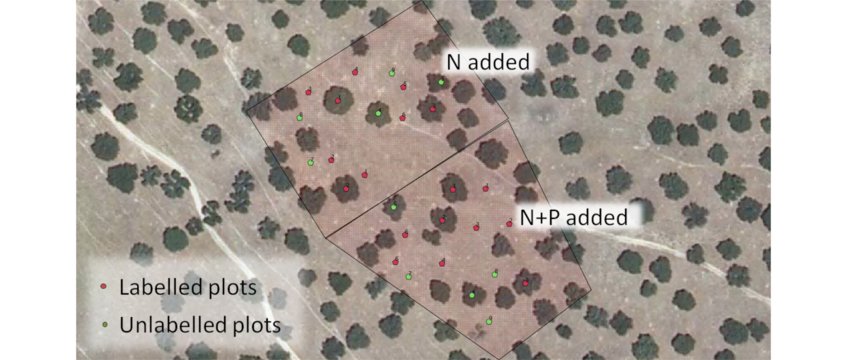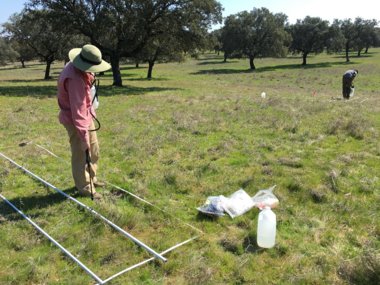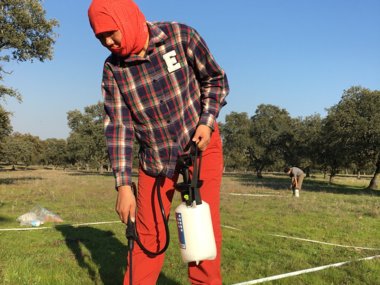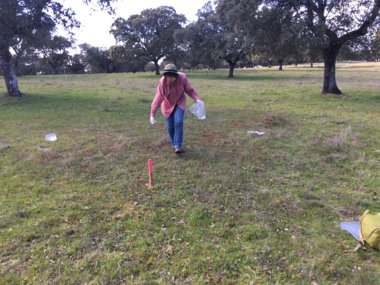
LFT: Long-term fate of N from fertilizer experiment
Introduction:
In May of 2015, fertilizer was applied for the large-scale stoichiometric manipulation experiment, MANIP. The following February (in 2016), little evidence of this fertilizer remained in the soil. This generated the question, where did it go? The LTF or “Long-Term Fate” experiment aims to answer that question by tracking the fate of added nitrogen fertilizer for one year after application.
Method:
In order to determine which molecules of nitrogen in a sample originated from fertilizer versus autochthonous sources, we used a 15N enriched ammonium nitrate salt tracer in addition to conventional fertilizer. The 99% 15N salt was added to 4x4 meter subplots within larger treatment plots. These larger plots had received either nitrogen or nitrogen and phosphorus fertilizer in the same amounts that were used in the larger MANIP experiment.
How does a tracer work? 15N is a stable isotope tracer. “Stable” is used to contrast with other isotopes which are radioactive (such as 14C, used in radiocarbon dating). Isotopes are atoms of an element which differ in their number of neutrons. Usually, atoms where the number of neutrons and the number of protons are equal (as in 14N, with 7 of each) are the most abundant isotope of that element. The atoms of nitrogen that are 14N vastly outnumber those that are 15N (99.6% vs 0.4%!), but other than that they participate in chemical reactions in much the same way. Because there is so little 15N that normally occurs in natural systems, or even in synthetic substances like fertilizer, we can add precise amounts of materials containing this stable isotope and use this to ‘trace’ or follow the atoms through the system of interest.
Technical Objectives:
To quantify the amount of nitrogen in soil mineral, organic, and herbaceous plant pools that originated from fertilizer, and how the contribution of fertilizer N to these pools changes over time.
Sampling:
Immediately after fertilization, samples were collected to evaluate the background 15N signatures of the plots. After fertilization, sampling occurred in a pulse-chase structure, with the intersampling interval growing steadily longer. Current plans are to sample 24 hours, 7 weeks, 8 months, and 1 year after labeling. We look forward to sharing our results here as they become available!


